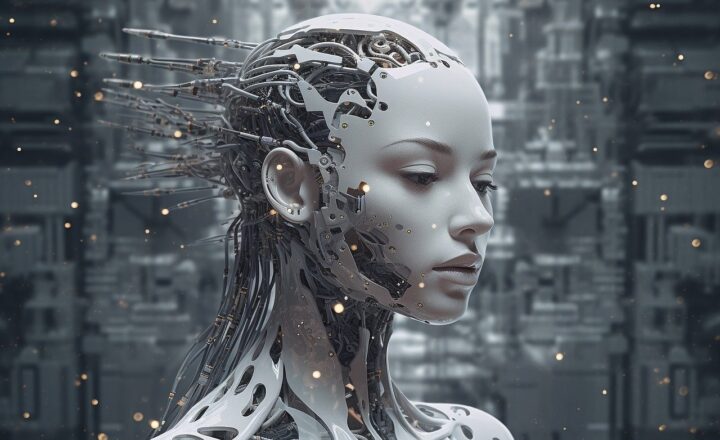How AI-Powered Robots Are Changing Manufacturing and Production
November 10, 2024

The manufacturing landscape has undergone a radical transformation in recent years, largely driven by advancements in artificial intelligence (AI) and robotics. As companies strive to enhance productivity and reduce operational costs, AI-powered robots have emerged as pivotal tools within production lines. This article explores how AI technology is revolutionizing the manufacturing sector and what it means for the future of production.
1. The Rise of AI in Manufacturing
Artificial intelligence has become an integral part of manufacturing, enhancing both operational efficiency and product quality. As companies face increasing pressure to remain competitive, AI tools are helping organizations automate processes, analyze data, and make informed decisions at a speed that was previously unimaginable.
1.1 Understanding AI Technology
At its core, AI refers to the simulation of human intelligence processes by machine systems. These processes include learning, reasoning, and self-correction. In manufacturing, AI applications typically involve:
- Machine Learning: Algorithms that enable systems to learn from data and improve performance without explicit programming.
- Computer Vision: Technology that allows robots to interpret and understand visual information from the world, enabling tasks like quality inspection and sorting.
- Natural Language Processing (NLP): Facilitates communication between humans and machines, allowing for more intuitive user interfaces and smart assistants.
2. How AI-Powered Robots are Redefining Production Line Efficiency
AI-enabled robots have transformed traditional production lines, contributing significantly to efficiency and productivity. Here’s how:
2.1 Automation and Precision
One of the key benefits of AI-driven robotics is their ability to perform tasks with unmatched precision. Routine tasks such as assembly, packing, and quality assurance can be automated, significantly reducing the risk of human error. For instance, collaborative robots (cobots) can work alongside human workers, enhancing production lines by taking over repetitive tasks and allowing humans to focus on more complex operations.
Additionally, robots equipped with AI can learn from their experiences, adapting to various production environments. This adaptability ensures that as production demands fluctuate, AI robots can optimize their performance accordingly.
2.2 Real-Time Data Analysis and Predictive Maintenance
AI-powered robots are not just useful for their capabilities on the assembly line; they can also analyze real-time data collected from the production process. This analysis enables manufacturers to monitor equipment performance, identify inefficiencies, and predict when maintenance is needed. Predictive maintenance minimizes downtime by addressing potential issues before they result in costly breakdowns.
With machine learning algorithms, these robots can continuously improve their operations, making manufacturing more responsive and agile.
3. Enhancing Quality Control with AI Technology
Quality control is crucial in manufacturing, as it directly impacts customer satisfaction and the bottom line. AI-powered robots excel in this area:
3.1 Computer Vision for Inspection
AI robots equipped with computer vision technology can perform inspections at high speeds, quickly identifying defects and inconsistencies in products. Unlike human inspectors, AI systems can analyze large volumes of data without fatigue, ensuring that every product meets quality standards.
Moreover, with the integration of machine learning, these systems can improve over time, becoming better at recognizing patterns and anomalies based on historical data.
3.2 Feedback Loops for Continuous Improvement
Quality control doesn’t end with inspection. AI robots can integrate feedback loops designed to continuously refine production processes. By analyzing data gathered during quality checks, AI can suggest improvements in materials, processes, or machine settings that can lead to better product quality.
This continuous improvement is one of the hallmarks of lean manufacturing, which focuses on waste reduction and efficiency enhancement.
4. The Future of AI Robots in Manufacturing
The integration of AI in manufacturing is still in its early stages, yet its potential is vast. As technology continues to evolve, AI robots will play an increasingly crucial role in production:
4.1 Collaborative Innovations
The future points to a more collaborative relationship between AI robots and human workers. The evolution of cobots will become more intelligent, allowing them to understand human actions better and assist in more complex tasks. This synergy will enable manufacturers to leverage the strengths of both machines and humans, resulting in enhanced productivity.
4.2 The Impact of Industry 4.0
The ushering in of Industry 4.0 is characterized by smart factories where AI, IoT (Internet of Things), and big data converge. As connectivity increases, AI robots will become the central components of these connected manufacturing environments, using data-driven insights to drive operational efficiency, innovation, and flexibility.
Manufacturers that embrace these technologies will have a significant competitive advantage, allowing for faster product development cycles, personalized production, and increased responsiveness to market changes.
Conclusion
AI-powered robots are not just a trend; they are fundamentally changing the landscape of manufacturing and production. By elevating efficiency, precision, and quality, AI technology replaces antiquated methods with smarter, more agile solutions. As we navigate towards a future shaped by Industry 4.0, the importance of AI robots in driving innovation cannot be overstated. Manufacturers who invest in these technologies today will lead the charge and define what production will look like tomorrow.







